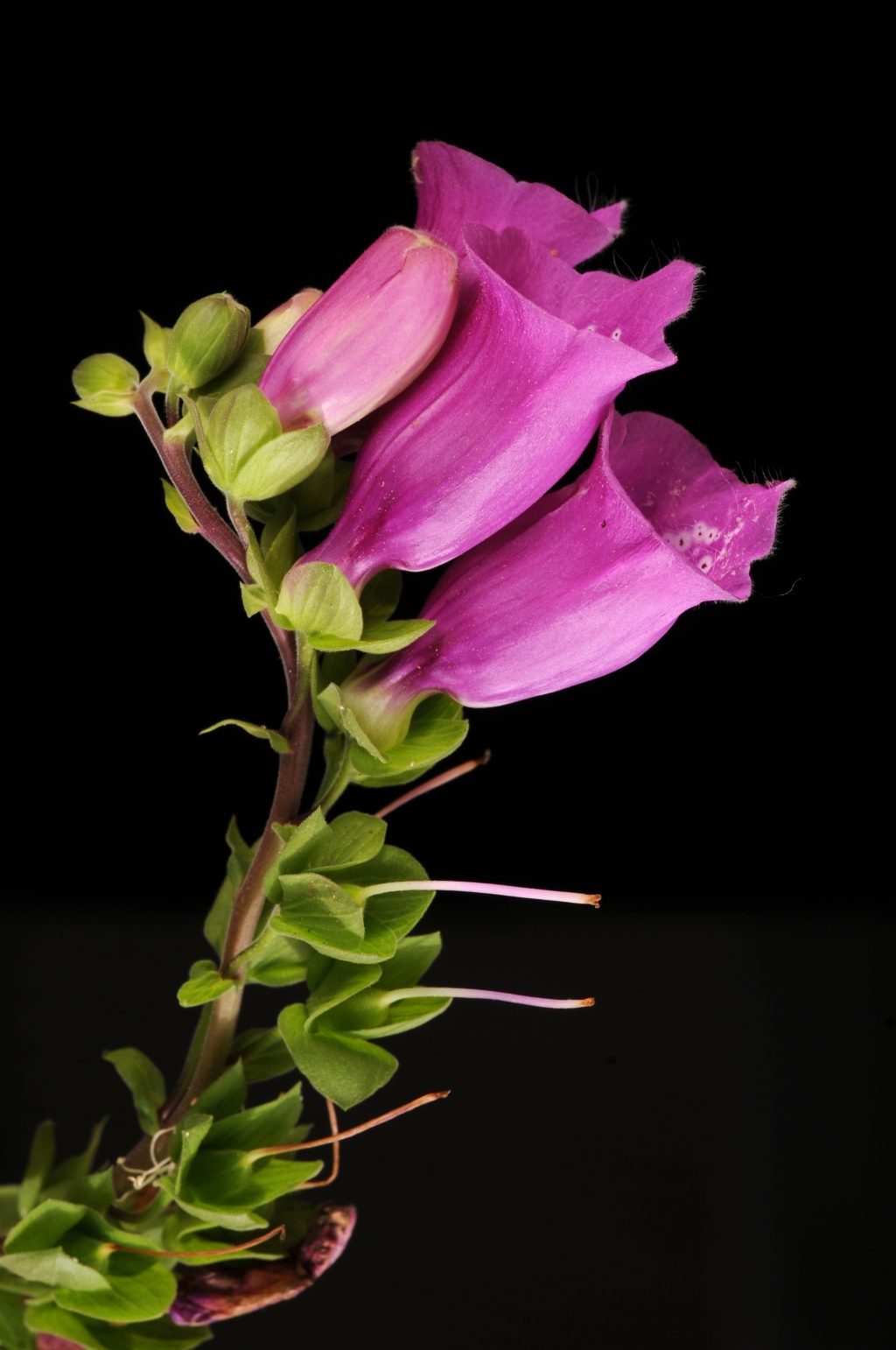Plantaginaceae
Annual or perennial herbs. Leaves rosetted at base, opposite or alternate, simple, entire to pinnately lobed, usually petiolate and sheathing at base; stipules absent. Inflorescences various, of dense terminal spikes, racemes or heads, or flowers solitary in axils; bracts usually present; bracteoles absent (usually) or present. Flowers usually bisexual; sepals 0, 4 or 5, free or partly fused, imbricate, often unequal; corolla bilabitate to actinomorphic (absent in Callitriche), 4- or 5-lobed, lobes at least shortly united at base; stamens 2, 4 or 5, staminode(s) sometimes present, anthers 2-celled, dehiscing by longitudinal slits; ovary superior, usually 2-locular but sometimes 4-locular by the growth of false septa, ovules 1–many per locule, style simple, stigma terminal, capitatte or 2-lobed. Fruit a loculicidal or circumscissile capsule (Plantago) or of 4 mericarps (Callitriche), or rarely, a nut; seeds various.
About 90 genera and 1900 species, cosmopolitan but particularly well represented in temperate regions; 23 genera with c. 120 species in Australia.
Many members of the family are cultivated for ornament, e.g. Digitalis (Foxglove), Antirrhinum (Snapdragon). Digitalis is the source of the drug digitalin, used in heart medicine. Stemodia is used by some Aboriginal people in the treatment of various ailments.
Corolla measurements are from the point of insertion to the apex of the upper side; spurs, if present, are measured from their apex to the base of the corolla at the level of the ovary.
Jeanes, J.A. (1999). Plantaginaceae. In: Walsh, N.G.; Entwisle, T.J., Flora of Victoria Vol. 4, Cornaceae to Asteraceae, pp. 463–474. Inkata Press, Melbourne.
 Spinning
SpinningJudd, W.S.; Campbell, C.S.; Kellogg, E.A.; Stevens, P.F.; Donoghue, M.J. (2016). Plant Systematics: a phylogenetic approach, edn 4th. Sinauer Associates, Inc. , Sutherland, Massachusetts USA.
Mabberley, D.J. (2017). Mabberley's plant-book : a portable dictionary of plants, their classification and uses utilizing Kubitzki's The families and genera of vascular plants (1990-) and current botanical literature; arranged according to the principles of molecular systematics, edn Fourth. Cambridge University Press.



